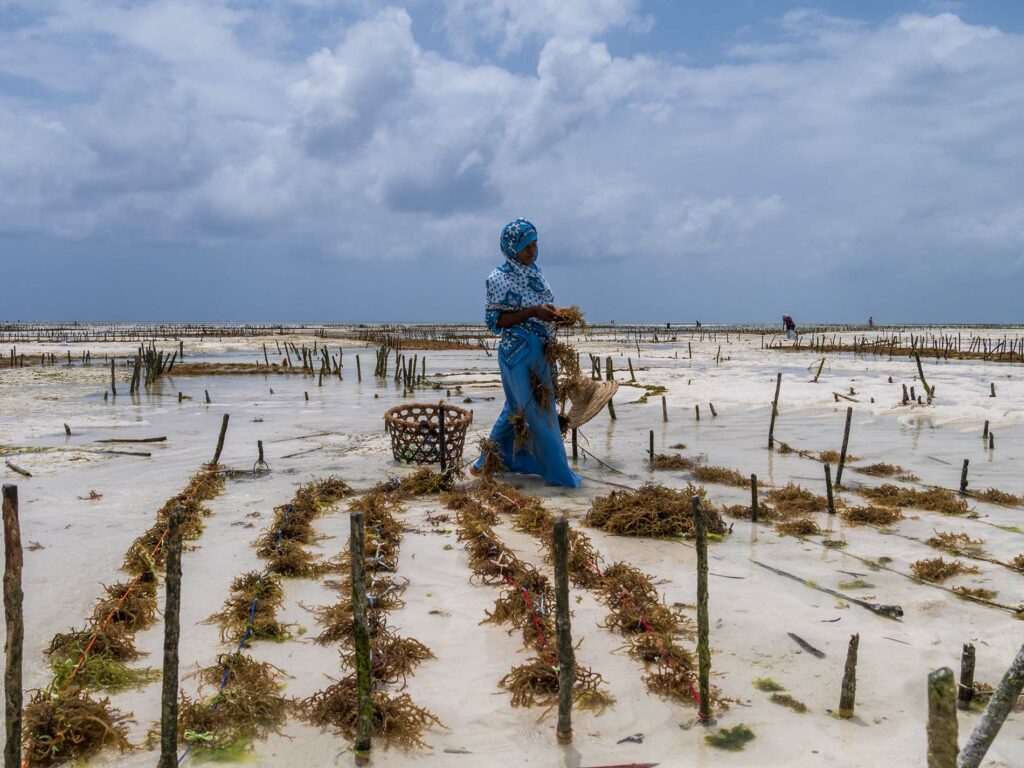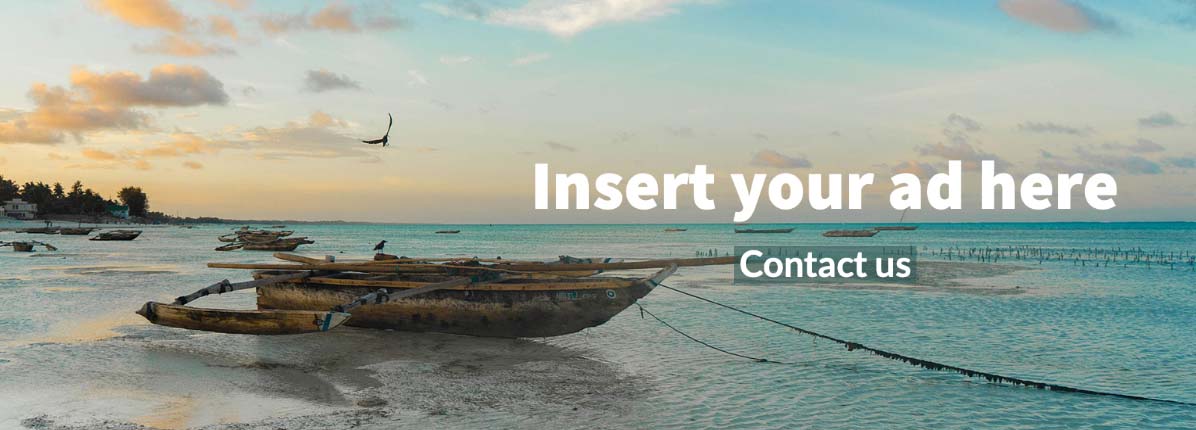Wading through the clear blue sea of Jambiani, I stumble over a taut wire. It has become almost invisible because of all the seaweed that overgrows it. Now that I’m paying more attention, I spot sticks in the water in several places, with wires stretched between them. Would they be fish traps for small crabs? A way to harvest shellfish, perhaps? Or are there nets attached to catch fish? It fascinates me immensely, so I decide to find out.
When I look out over the sea the next morning during breakfast, the water has receded hundreds of meters due to the low tide. The traditional sailboats have dried up and those mysterious sticks are visible all over the place. I don’t seem to be the only one interested; several ladies are busy with the wires.
They clearly do care about the seaweed. The wires between the sticks are fully overgrown with seaweed plants, which are expertly loosened. Old rice bags full of the weed are then tied together and dragged onto the beach. What on earth are they doing with all those kilos of green aquatic plants? I can’t say that I have ever seen seaweedon any restaurant menu…
Seaweed Center Paje
I end up at Mwani Seaweed Center Paje. Employee Haje takes me to the beach, where several women are working on the farm. “At the moment there are about ten women working here. In the past, this was always done by men, but now women grow the seaweed.” That means they are now financially independent. As we walk further between the wires stretched with sticks, we meet Mama Maua who is busy fastening seaweed cuttings to the threads with a shoe-string knot. “Within two months, the rope is fully grown with seaweed and can be harvested”, says Haje. The only thing that seems to be needed is patience: the sea does the rest. “We harvest about eighty to one hundred kilos of seaweed a month here.”

“Seaweed is indeed edible”, says Haje. “But we use it in different ways.” The Seaweed Center’s shop is indeed full of other products: various soaps, scrubs, and skin oils, all of which are made with seaweed…
“After harvesting, we let the seaweed dry for a few weeks; then about half of the weight remains”,says Haje.
“The seaweed is then ground, and a sort of powder remains. Mixed with coconut oil and beeswax, itforms the basic ingredients for natural soap. We sell it to private individuals but also to many hotels in Zanzibar.”
When I return to the lodge and wash my hands, I recognize the package wrapped in a dried banana leaf: soap made from the seaweed that is grown right in front of the lodge. Nice to know!
Mwani Zanzibar (Seaweed Center) in Paje is open daily. A tour costs 10 USD per person. Check out the Mwani Zanzibar website for more information.


Recent Comments